FW
 A new report by the non-profit advocacy organization Stand.Earth lists fashion as a top filthy industry and brands still “wearing last season’s greenwash” rather taking real action against polluting processes within the supply chain.
A new report by the non-profit advocacy organization Stand.Earth lists fashion as a top filthy industry and brands still “wearing last season’s greenwash” rather taking real action against polluting processes within the supply chain.
Besides accusations, the report also includes the commitments made by brands who have signed up to one of several climate change assessment/limiting initiatives, including the Sustainable Apparel Coalition, the UN Fashion Industry Charter for Climate Action and the G7 Fashion Pact. The report goes on to rank these commitments by the likelihood of achieving targets of reducing emissions needed to halt global warming to 1.5 degrees, in line with the UN Paris Agreement.
Carbon emission from brands
Initially, it assesses the commitment of brands to not only reduce their carbon emissions across the entire supply chain and operations but also their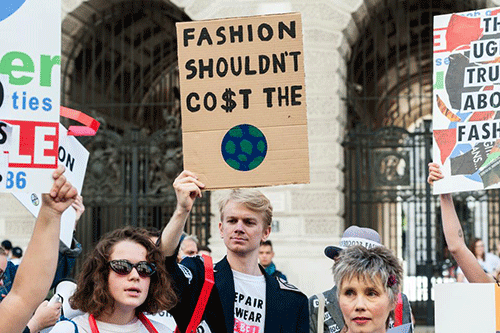 investment in renewable energies. The report declares that 8.1 per cent of global carbon emissions result from the fashion industry and this will increase nearly 60 per cent by 2030, at the current rate of growth, so renewable energy solutions are a critical imperative.
investment in renewable energies. The report declares that 8.1 per cent of global carbon emissions result from the fashion industry and this will increase nearly 60 per cent by 2030, at the current rate of growth, so renewable energy solutions are a critical imperative.
Impact on brands
In terms of relative impact, the brands on the list span Ganni, H&M, and LVMH and Kering groups. Earlier this year, the ‘Pulse of the Fashion Industry’ report (compiled by the Global Fashion Agenda, Boston Consulting Group and The Sustainable Apparel Coalition and released at the Copenhagen Fashion Summit), segmented the fashion industry by global market share. Entry price point fashion brands (e.g. Primark, H&M, and Zara) hold 43 of the global market share while mid-price brands account for 47 per cent. That leaves premium and luxury brands, including those in the LVMH and Kering stables and Ganni, at 10 per cent. Therefore, the ranking does not reveal the relative importance of the commitment of brands according to the impact they can actually have on climate change. So, if Zara, H&M, and Target, for example, managed to reduce their carbon emissions by 30 per cent it will be more than 1000 Ganni’s. The other point worth noting was the vast investment and innovation that garment manufacturers are making. The expansion of Leeds certified sustainable factories in Bangladesh, for example, has come at a huge cost to manufacturers and is entirely independent of brands.
Garment manufacturers on reduction of carbon emission
The also reveals, the largest segments of global fashion industry is actually shaped and driven by large-scale manufacturers serving the entry and mid-price point brands. And the scale at which some of these factories work dwarf the production quantities of entire brands. Pacific Jeans’ for example, has 5 garment factories in Bangladesh with 26,000 staff manufacturing 36 million garments a year for brands including Zara, H&M, Uniqlo and GAP. The climate change initiatives of a manufacturer like this far outweigh those of relatively small brands on this list, like GANT and Eileen Fisher. Soorty a vertical denim manufacturer making up to 6.5 million meters per month in their LEED platinum certified mill is an example of how pioneering sustainability initiatives can be achieved at huge scale. Ranking of the world’s largest garment manufacturers according to their initiatives to reduce carbon emissions and their use of renewable energy sources (along with the brands they manufacture for) would give far more clarity to this report.
Vidalia is going to revive selvedge denim production in the United States. The company has bought some 40 selvedge denim weaving machines from Cone, a famous selvedge denim mill in the US, which closed down in 2017. That means Vidalia will be a denim mill with selvedge production in the US after a very long time. Vidalia will make not only denim, but yarns, too, for sale. Everything produced by the mill will contain e3 sustainable cotton. Every yard of fabric, and every pound of yarn, will contain sustainably grown and traceable cotton from farmers around the US.
Vidalia Mills has a game plan to execute its operation in the US with open-end yarn spinning aimed to start up in November, selvedge denim production in December and ring-spun yarn in January next year.
Denim is an American fabric. With the closing of Cone Mills, American made denim came to an end. Bringing denim manufacturing back to the US is seen as providing an attractive, alternative sourcing opportunity for brands. The hope is this is the start of more domestic denim industry revival. Vidalia also plans to integrate a foam dye system from a Turkish manufacturer of air-conditioning systems for spinning, weaving and knitting mills.
Luxury brand Burberry has signed a partnership to sell its second-hand products through consignment marketplace The RealReal in the US. As per the partnership, customers will be able to sell their used garments and accessories back at selected Burberry stores in the US. Once the items are received, any necessary repairs or restorative work will be completed before they are put up for resale.
Customers will be able to buy the “pre-loved” items through The RealReal’s online platform or through Burberry’s personal shopping service at stores taking part in the pilot. The partnership comes after The RealReal’s annual report found that resale demand for Burberry brand items through its platform has increased 64 per cent year-on-year in 2019. Most searches through its site and app are made by Millennial and Gen Z shoppers.
If the pilot project, which is due to end on 31 January 2020, is successful, Burberry will explore the possibility of expanding the offering. For the trial, the British brand and The RealReal will make a joint donation to NGO Materials for the Arts, which educates students and the general public around "creative" reuse.
The British brand has offered after-care and repair services to consumers since it was founded in 1856, and last year handled 20,000 requests under these schemes. More recently, it has forged partnerships with handbag brand Elvis and Kresse and recycled materials specialist Aquafil to repurpose its leather offcuts etc.
For the first eight months of the year, US apparel imports from China were up 1.99 per cent year to year. US’ imports from across the world increased 5.76 per cent for the year to date though August. In the month, apparel imports rose just 0.15 per cent compared to July as imports patterns have been disrupted by companies looking to get goods in ahead of anticipated tariffs as trade wars simmer on multiple fronts. The increase reflected a gain in the goods deficit and a decrease in the services surplus. The largest trade deficits were recorded with China and the European Union.
US apparel imports from Vietnam were up 12.14 per cent. Bangladesh’s shipments rose 11.81 per cent in the period. Imports from India increased 8.19 per cent. Cambodia’s shipments were up 8.58 per cent Pakistan’s gained 8.56 per cent. Apparel imports from Honduras gained 11.91 per cent. Shipments from Nicaragua were up 12.7 per cent. Shipments from Haiti increased 16.09 per cent and those from Peru rose 7.76 per cent. Imports from Egypt rose 17.72 per cent. Those from Kenya were up 23.69 per cent. Madagascar was up 24.48 per cent and Ethiopia was up 90.98 per cent.
American Eagle Outfitters plans to accelerate its sustainability improvements and become carbon neutral by 2030. The company is committed to carbon reduction, water reduction and the use of more sustainable raw materials. AEO focuses on youth and its optimism toward the future, so building a better world for generations to come is fundamental to its values and purpose. It pledges to accelerate sustainability improvements across its entire organization, and throughout the supply chain, holding itself accountable through the adoption of science-based targets. As a leading retailer, it is dedicated to working across the industry to create systemic changes in garment manufacturing.
American Eagle’s sustainability goals include achieving carbon neutrality in all of its owned and operated facilities (offices, stores, distribution centers) and employee business travel by 2030, reducing carbon emissions by 40 per cent by 2030 and 60 per cent by 2040, ensuring that by 2023 50 per cent of water used in laundries is recycled, reducing water use in jeans production by 30 per cent and ensuring wastewater from water-intensive facilities is free from hazardous chemicals. In addition, all cotton used in products will be sustainably sourced and sourcing of sustainably produced viscose fibers will be increased. Customers will be encouraged to reduce apparel waste through jeans recycling in American Eagle stores.
"Handloom Export Promotion Council (HEPC) will attend the International Sourcing Expo Australia for the eighth consecutive year, furthering solid industry links and cooperation between the Australian and Indian governments in relation to textiles and fashion."
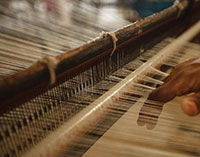 Handloom Export Promotion Council (HEPC) will attend the International Sourcing Expo Australia for the eighth consecutive year, furthering solid industry links and cooperation between the Australian and Indian governments in relation to textiles and fashion.
Handloom Export Promotion Council (HEPC) will attend the International Sourcing Expo Australia for the eighth consecutive year, furthering solid industry links and cooperation between the Australian and Indian governments in relation to textiles and fashion.
The product profile of the exhibitors under the HEPC aegis has evolved from just an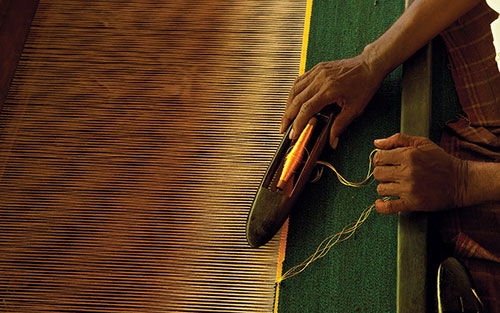 exclusive home textile range of products to the current participants offering the whole gamut of all textile products including an entire range of home textiles such as coir products, clothing, accessories and garments.
exclusive home textile range of products to the current participants offering the whole gamut of all textile products including an entire range of home textiles such as coir products, clothing, accessories and garments.
Organiser IEC Group anticipates more than 4,000 trade visitors to visit the International Sourcing Expo and co-located Footwear and Leather Show Australia. Along with China Clothing Accessories Textiles Expo, which is held concurrently, more than 700 textile, apparel and footwear manufacturers and agents from 20+ countries will exhibit at the Melbourne Convention and Exhibition Centre from November 12-14 2019.
The trade-only event will showcase exhibitors from China, India, Bangladesh, Pakistan, Hong Kong, Fiji, Indonesia, Vietnam, South Africa, United Arab Emirates, Peru, Taiwan, Turkey, Thailand, Vietnam, Australia, and USA.
"As was evident from the 2008 recession, the global denim industry is not immune to the effects of economic crisis that looms large in 2020. The 2008 recession hit the denim industry like a storm. It set new standards of the focus of many brands shifting to newer markets such as Asia. Consumers could no longer spend $300 for a pair of jeans and so they “traded down” and sought out new brands and retailers. Increasing casualisation of the workplace gave rise to the birth of new styles such as athleisure, comfort and stretch bottoms, which began to accelerate during the Great Recession."
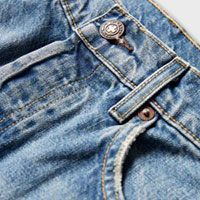 As was evident from the 2008 recession, the global denim industry is not immune to the effects of economic crisis that looms large in 2020. The 2008 recession hit the denim industry like a storm. It set new standards of the focus of many brands shifting to newer markets such as Asia. Consumers could no longer spend $300 for a pair of jeans and so they “traded down” and sought out new brands and retailers. Increasing casualisation of the workplace gave rise to the birth of new styles such as athleisure, comfort and stretch bottoms, which began to accelerate during the Great Recession.
As was evident from the 2008 recession, the global denim industry is not immune to the effects of economic crisis that looms large in 2020. The 2008 recession hit the denim industry like a storm. It set new standards of the focus of many brands shifting to newer markets such as Asia. Consumers could no longer spend $300 for a pair of jeans and so they “traded down” and sought out new brands and retailers. Increasing casualisation of the workplace gave rise to the birth of new styles such as athleisure, comfort and stretch bottoms, which began to accelerate during the Great Recession.
The recession also forced brands to squeeze production costs by shifting their sourcing to cheaper markets. It led many fast fashion brands replacing the premium pair of denims in the consumer’s shopping carts as disposable clothing became more acceptable.
The 2020 recession however, paints a different picture and doesn’t focus on fast fashion. The emergence of new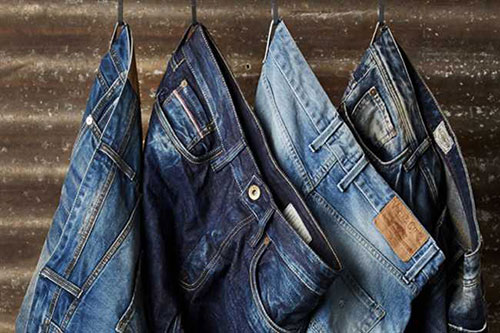 e-commerce channels has enabled consumers to buy their desired products at affordable rates. It has also led to the evolution of value-centric retailers like Target who are advancing the quality of their products according to its customers’ needs.
e-commerce channels has enabled consumers to buy their desired products at affordable rates. It has also led to the evolution of value-centric retailers like Target who are advancing the quality of their products according to its customers’ needs.
As a result, department stores are likely to suffer the most in the 2020 recession as these are least equipped to customise their products’ quality and prices according to their customers’ needs.
Combining sustainability with practicality
Many denim brands adopted sustainable businesses after the 2008 recession. It became the ‘new premium’ for brand Candiani and also the instigator of its creativity. It also led to new innovations with brands like Re/Done, Ateliere & Repairs and Blue Of A Kind deconstructing and restoring the 5-pocket jeans into a more conic and sustainable piece of clothing.
However, the focus on sustainability is likely to diminish during the 2020 recession, unless it is inbuilt into a brand’s DNA. Companies who tap into sustainability while also keeping their profit margins in view are likely to emerge as winners.
Innovation to be the key to success
The 2008 recession also led to the popularity of new denim styles as consumers were no longer satisfied with a simple pair of jeans. Premium denim styles began paying more attention to their product and details. In 2010, denim overalls propelled Los Angeles-based Frame onto the radar of fashionistas. Today, the brand is expanding its product offerings by adding leather handbags and sneakers to its line.
Similarly, Baldwin, which rebranded itself as BLDWN earlier this year, now aims to be a premium lifestyle brand based on modern American fashion. Another emerging trend is the reduction in the demand for indigo fabrics. People are selling less amount of the indigo dye even though there’s not a major reduction in orders for indigo jeans.
However, simply rebranding itself and focusing on more non-denim items is not likely to pull the industry out of the 2020 recession. For this, the industry needs to a create products are the uniquely different from those already present in their consumers’ closets.
 Turkish Company Matesa Textile is using the new software launched by Uster Technologies known as Uster Quality Expert both at its shop floor and top floor.
Turkish Company Matesa Textile is using the new software launched by Uster Technologies known as Uster Quality Expert both at its shop floor and top floor.
Going beyond mere data collection, the software supports the company to achieve its targets for yarn production and provides process security by empowering quality managers to intervene quickly to remedy any starting issue at source.
The system delivers real-time notifications to smartphones and tablets. Uster Mobile Alerts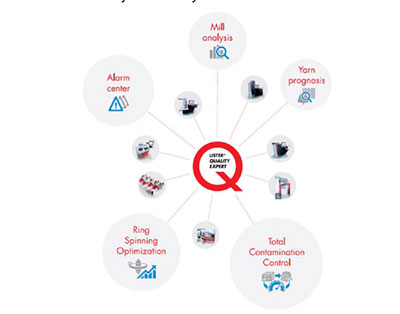 app connects users to quality and allows a fast information flow. From one single application, mobile devices receive early warnings about potential quality problems – as well as indications of the source of the issue and advice on saving raw material. Combined data from in-line and laboratory instruments, continuously analyzed by Assistant Q, keeps managers informed about quality issues in production and helps initiate immediate counter-measures.
app connects users to quality and allows a fast information flow. From one single application, mobile devices receive early warnings about potential quality problems – as well as indications of the source of the issue and advice on saving raw material. Combined data from in-line and laboratory instruments, continuously analyzed by Assistant Q, keeps managers informed about quality issues in production and helps initiate immediate counter-measures.
Uster Quality Expert opens up new horizons for process optimisation in the entire mill. Value modules in software combine to automate costly tasks, prevent faults and elevate process performance to the required quality level, constantly and reliably.
"The upcoming Maroc in Mode - Maroc Sourcing, to be held from October 17-18, 2019 in Marrakech, will offer international buyers and retailers a complete overview of the Moroccan textile and clothing industry by focusing on varied topics ranging from fast fashion to sustainable production."
The upcoming Maroc in Mode - Maroc Sourcing, to be held from October 17-18, 2019 in Marrakech, will offer international buyers and retailers a complete overview of the Moroccan textile and clothing industry by focusing on varied topics ranging from fast fashion to sustainable production.
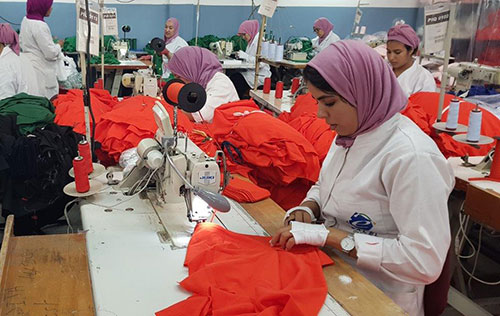
The fair will be organised by Amith, the Moroccan Textile Association in collaboration with the Moroccan Foreign Trade Ministry and AMDIE. More than 120 exhibitors will participate in the exhibition that will include segments like Fast Fashion, Denim, Knit, Tailoring, Lingerie, Corporate Fashion.
The importance of sustainability will be reflected in the conference program of exhibition that will discuss topics such as certification, sustainability, water use, etc.
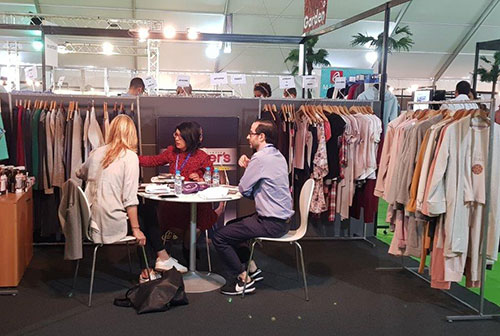
The Denim Cluster will present innovations in the Moroccan denim industry and target new projects around sustainable design, ecological processing, recycling and all new ideas for sustainable development.
With over 40 exhibitors, Fast Fashion will be the largest exhibition area. Its exhibitors will include companies like Advanced Distribution Services, Apparel Mills, Confetex Albo, Elite Sportswear, Filmod, New Line, Textile Harmony, Two One Clothing, Vita Couture, Yara Confection, Etc. The Maille/Knit area will present Bonneterie De L'atlas, Modatric, Sinmatex, Stradyconf, etc. In the Tailoring segment, specialists like Alize Group, Sefita, Etc., Services will be offered by A M D I, Casa Moda Academy, CTTH, ESITH, O F P P T, OETI, etc will present their collections.
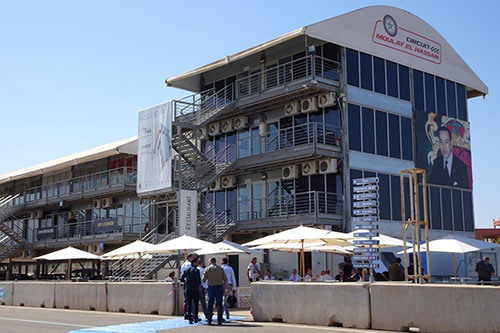
The Moroccan technical textile cluster C2TM that will exhibit in the EPI /Sportswear & Leisure segment will highlight Moroccan companies involved in the technical textile sector and new innovative collaborations in this field.
The program of the trade show will be complemented by B2B meetings at the "Espace Création“ – a trend area looking at selected themes of next year´s collections, conferences and panels on sectoral and current topics such as efficiency, sustainability, eco friendly fashion, improvement of the end product offering, financing and banks.
Even though the September-October period is known as the peak season for sale of rayon grey fabric in China, the market did not perform as well as expected. Production in weaving mills of Gaomi, Nantong and Shijazhuang surpassed sales leading to a lot of unsold inventory. Fabric mills in Shandong, Hebei, Shaanxi and Zhejiang shifted their production to polyester/rayon and interwoven fabrics as not only the demand for conventional fabrics shrank but even the supply exceeded demand and prices remained sluggish.
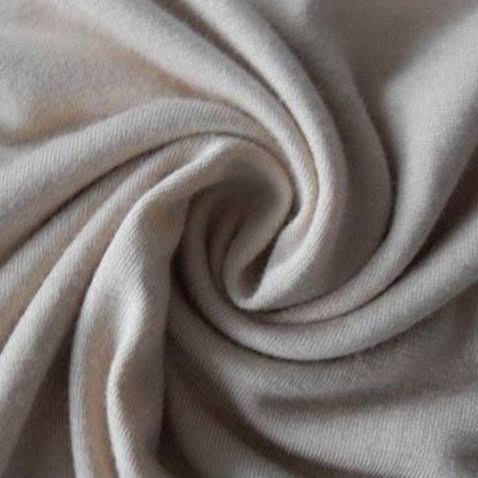 Even though the September-October period is known as the peak season for sale of rayon grey fabric in China, the market did not perform as well as expected. Production in weaving mills of Gaomi, Nantong and Shijazhuang surpassed sales leading to a lot of unsold inventory. Fabric mills in Shandong, Hebei, Shaanxi and Zhejiang shifted their production to polyester/rayon and interwoven fabrics as not only the demand for conventional fabrics shrank but even the supply exceeded demand and prices remained sluggish. The three days of holidays that weavers had in the mid-autumn festival further dampened their confidence towards the future growth prospects.
Even though the September-October period is known as the peak season for sale of rayon grey fabric in China, the market did not perform as well as expected. Production in weaving mills of Gaomi, Nantong and Shijazhuang surpassed sales leading to a lot of unsold inventory. Fabric mills in Shandong, Hebei, Shaanxi and Zhejiang shifted their production to polyester/rayon and interwoven fabrics as not only the demand for conventional fabrics shrank but even the supply exceeded demand and prices remained sluggish. The three days of holidays that weavers had in the mid-autumn festival further dampened their confidence towards the future growth prospects.
Changing demand and consumption patterns impacts production
The uncertain external environment and unstable feedstock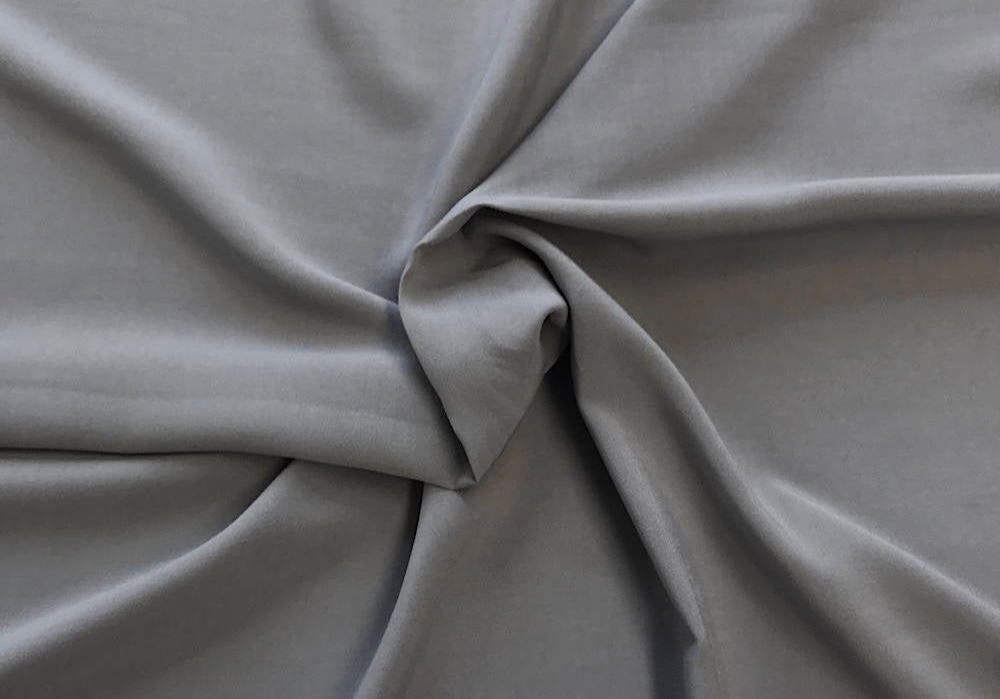 prices during the period compelled traders to remain on the sidelines. Though the market started improving from late-August, weavers still held a pessimistic view of the market as sales continued to be weak and prices remained sluggish. Besides external factors, the shrinking sales ratio of end-user products also affected the market.
prices during the period compelled traders to remain on the sidelines. Though the market started improving from late-August, weavers still held a pessimistic view of the market as sales continued to be weak and prices remained sluggish. Besides external factors, the shrinking sales ratio of end-user products also affected the market.
Changing demand and consumption patterns and a rapid follow-up of apparel production capacity in Southeast Asia has led to fast decline in apparel production in China in recent years. During the first half of 2019, apparel production dropped on basis of a large fall in 2018. From Jan to Dec of 2018, sale of apparels declined by 22.6 per cent to 22.274 billion garments while from Jan to Jun 2019, it declined by 1.09 per cent year-on-year to 10.413 billion garments.
Weavers adopt a cautious approach
Exports of cotton apparels also shrank rapidly. From Jan to Dec 2018, exports declined by 3.2 per cent to 13.03 billion pieces while from Jan to June 2019, they further declined to 6.07 billion pieces.
Some other factors that impacted the rayon grey fabric market in China were the intensification of trade protectionism and asymmetric advantages of textile and apparel in Southeast Asian countries. These led to a low demand from foreign importers further dampening the hope of weavers who are still selling only those stocks whose prices have stabilized.












